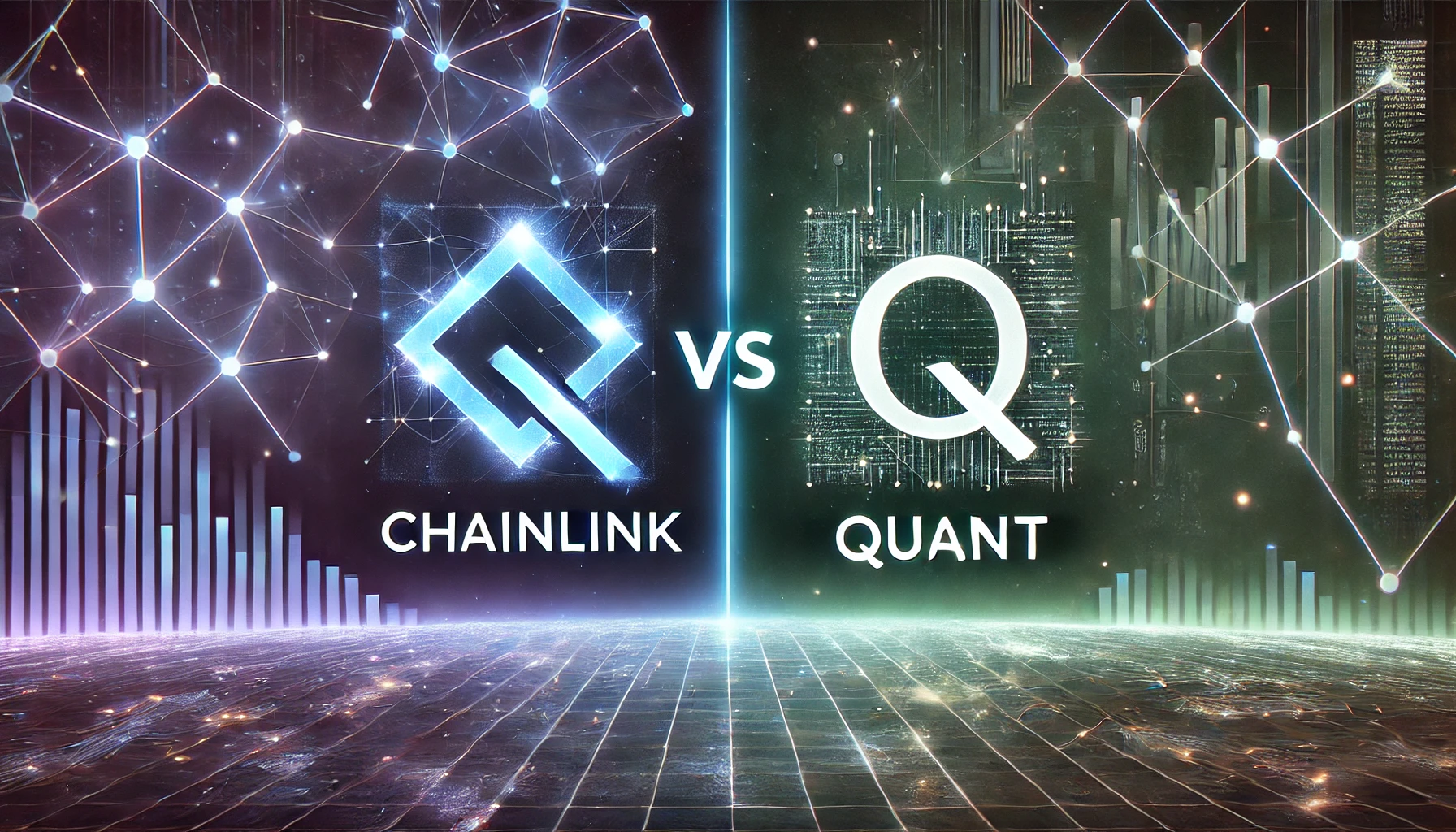
Bridging the Gap: Chainlink vs. Quant – A Comparative Analysis
Introduction
In the ever-evolving chainlink landscape of blockchain technology, distinguishing between different platforms and understanding their unique offerings is crucial for developers, investors, and enthusiasts. Two significant players in this space, Chainlink and Quant, have carved out unique niches with distinctive technologies and applications. Chainlink has become synonymous with reliable oracles that bridge real-world data to smart contracts, while Quant introduces a revolutionary approach to blockchain interoperability with its Overledger network. This article delves deep into both platforms, comparing their technologies, use cases, and overall impact on the blockchain ecosystem.
What is Chainlink?
Chainlink is a decentralized oracle network designed to connect smart contracts with data from the real world. It is foundational in the realm of blockchain as it allows smart contracts on Ethereum to securely interact with external data feeds, events, and payment methods. The premise of Chainlink is to provide the same level of reliability and security that blockchain offers but for data input and output.
Chainlink operates through a network of nodes that collectively fetch, validate, and deliver data to smart contracts. This process ensures that the data used in smart contracts is accurate and tamper-proof. The network uses LINK tokens to pay node operators for their services, creating an ecosystem where the data providers are incentivized to maintain the integrity of the data they provide. This model has proven effective, leading to widespread adoption of Chainlink’s oracles in various sectors, including finance, insurance, and logistics.
What is Quant?

Quant aims to revolutionize blockchain technology with its unique proposition called the Overledger network. This platform is designed to facilitate interoperability between multiple blockchains, allowing for the transfer of data and value across diverse ledgers without the need for intermediaries. Quant’s approach addresses a critical pain point in the blockchain community—the lack of seamless communication between different blockchain networks.
At the heart of Quant’s offering is the Overledger OS, which is touted as the first blockchain operating system that facilitates the development of multi-chain applications (MApps). These applications can operate across multiple blockchains, harnessing the strengths of each. This capability not only enhances functionality but also broadens the scope for developers to innovate. Quant’s technology is particularly appealing to enterprises and industries where such interoperability can streamline processes and reduce costs, such as in banking, healthcare, and supply chain management.
Comparative Analysis of Chainlink and Quant
When comparing Chainlink and Quant, it is essential to understand that while both serve critical functions in the blockchain ecosystem, they operate in fundamentally different areas. Chainlink’s oracles are pivotal in providing external data to smart contracts, thereby enabling contracts to execute based on real-time information accurately. This functionality is crucial for applications that rely on external triggers, such as insurance payouts based on weather conditions.
On the other hand, Quant’s Overledger network focuses on interoperability between blockchains, which is a different kind of technical challenge. This ability to allow multiple blockchains to interact with each other opens up new possibilities for creating sophisticated decentralized applications that can leverage the unique advantages of various blockchains. For example, a financial service MApp might use Ethereum for smart contracts, Bitcoin for value storage, and Ripple for real-time global payments.
Advantages and Disadvantages
Each platform has its strengths and weaknesses. Chainlink’s major advantage lies in its robust, decentralized approach to data feeds, which secures smart contracts against manipulation. However, being heavily reliant on the external nodes’ integrity can be seen as a potential vulnerability if not enough incentivization or penalties are in place.
Quant’s strength is its ability to seamlessly integrate multiple blockchains, which can be a game-changer for enterprises that need to interact with various cryptocurrencies and blockchains. The downside, however, could be its complexity and the need for significant adoption across industries for it to realize its full potential.
Future Outlook and Predictions
The future looks promising for both Chainlink and Quant as they continue to address significant challenges in the blockchain space. Chainlink is set to play a crucial role in the realization of truly functional smart contracts that can interact with the real world, while Quant’s vision of a connected blockchain world is gradually gaining traction among enterprises.
Conclusion
Both Chainlink and Quant offer revolutionary solutions to two very different problems in the blockchain space. As the industry matures, the roles of both platforms are set to become more pivotal. For those looking to invest or develop on these platforms, understanding their underlying technologies and potential applications is key.
FAQs
- What is the primary difference between Chainlink and Quant?
- Chainlink provides external data to blockchains through oracles, while Quant offers interoperability between different blockchains.
- How do Chainlink’s oracles differ from Quant’s Overledger?
- Chainlink’s oracles focus on data delivery, whereas Quant’s Overledger facilitates blockchain interaction.
- What are the main advantages of Chainlink over Quant?
- Chainlink is essential for applications needing real-world data, offering robust and secure data delivery.
- What are the main advantages of Quant over Chainlink?
- Quant bridges different blockchains, allowing for complex applications that leverage multiple blockchains.
- Which platform has better scalability solutions?
- Quant, with its ability to interoperate between multiple blockchains, offers more scalability options for large-scale applications.
- How do the partnerships of Chainlink and Quant differ in terms of impact on their growth?
- Chainlink’s partnerships are mostly in the data provision space, while Quant’s are in the enterprise blockchain integration arena.
You May Also Read:https://theblookets.com/




